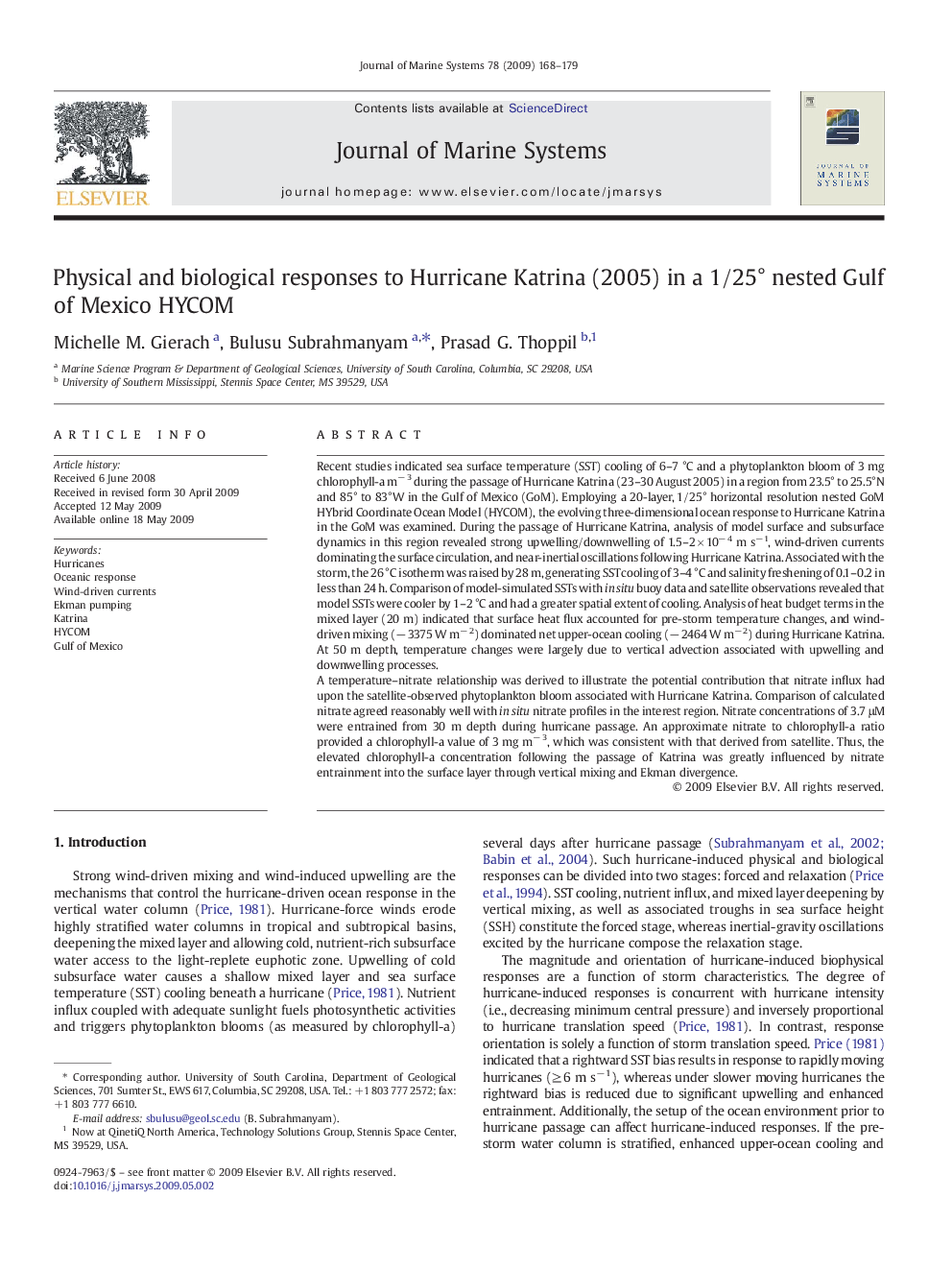| کد مقاله | کد نشریه | سال انتشار | مقاله انگلیسی | نسخه تمام متن |
|---|---|---|---|---|
| 4548872 | 1327933 | 2009 | 12 صفحه PDF | دانلود رایگان |

Recent studies indicated sea surface temperature (SST) cooling of 6–7 °C and a phytoplankton bloom of 3 mg chlorophyll-a m− 3 during the passage of Hurricane Katrina (23–30 August 2005) in a region from 23.5° to 25.5°N and 85° to 83°W in the Gulf of Mexico (GoM). Employing a 20-layer, 1/25° horizontal resolution nested GoM HYbrid Coordinate Ocean Model (HYCOM), the evolving three-dimensional ocean response to Hurricane Katrina in the GoM was examined. During the passage of Hurricane Katrina, analysis of model surface and subsurface dynamics in this region revealed strong upwelling/downwelling of 1.5–2 × 10− 4 m s− 1, wind-driven currents dominating the surface circulation, and near-inertial oscillations following Hurricane Katrina. Associated with the storm, the 26 °C isotherm was raised by 28 m, generating SST cooling of 3–4 °C and salinity freshening of 0.1–0.2 in less than 24 h. Comparison of model-simulated SSTs with in situ buoy data and satellite observations revealed that model SSTs were cooler by 1–2 °C and had a greater spatial extent of cooling. Analysis of heat budget terms in the mixed layer (20 m) indicated that surface heat flux accounted for pre-storm temperature changes, and wind-driven mixing (− 3375 W m− 2) dominated net upper-ocean cooling (− 2464 W m− 2) during Hurricane Katrina. At 50 m depth, temperature changes were largely due to vertical advection associated with upwelling and downwelling processes.A temperature–nitrate relationship was derived to illustrate the potential contribution that nitrate influx had upon the satellite-observed phytoplankton bloom associated with Hurricane Katrina. Comparison of calculated nitrate agreed reasonably well with in situ nitrate profiles in the interest region. Nitrate concentrations of 3.7 μM were entrained from 30 m depth during hurricane passage. An approximate nitrate to chlorophyll-a ratio provided a chlorophyll-a value of 3 mg m− 3, which was consistent with that derived from satellite. Thus, the elevated chlorophyll-a concentration following the passage of Katrina was greatly influenced by nitrate entrainment into the surface layer through vertical mixing and Ekman divergence.
Journal: Journal of Marine Systems - Volume 78, Issue 1, August 2009, Pages 168–179